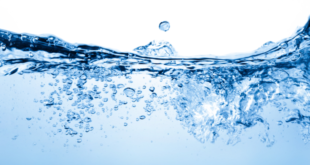The San Diego Regional Water Quality Control Board (SDRWQCB) has issued an investigative order to ten owners and operators of municipal stormwater sewer systems and publicly owned sewage collection systems and treatment works suspected of discharging human fecal waste into the Lower San Diego River and its tributaries. Monitoring by the Southern California Coastal Water Research Project (SCCWRP) revealed high concentrations of human fecal matter in 12 locations sampled during storms in 2016-17.
According to Fox 5 San Diego, David Gibson, SDRWQCB executive officer noted that “While we’ve all known about the border issue — the Tijuana water shed — it was surprising to find out there was actually a lot of human waste present in the San Diego River water shed.”
The SCCWRP study of the Lower San Diego Watershed also detected the presence of norovirus, a pathogen that can cause serious gastrointestinal illness. “There are organisms like noroviruses that cause massive illnesses on cruise ships that we’re finding in our own water,” said Gibson.
While the San Diego region’s beaches are among the cleanest in the state, the risk of disease is elevated for individuals engaging in water-contact recreational activities after storms – most notably surfers. Surfers are known for spending considerable time in the water regardless of season and water quality deteriorates during storms and wet weather, when stormwater infrastructures often fail to fully capture and treat urban runoff.
In addition to possible health risks, beach closures due to poor water quality can harm the state’s annual $10 billion economy. Millions of tourists and residents visit California’s beaches annually to swim, kayak, dive and or surf and the SDRWQCB continually works to protect and restore the chemical, physical and biological integrity of waters in the region.
“The adoption of the investigative order continues the Water Board’s efforts to focus on outcomes that restore and protect human and environmental health,” said Gibson. “Identifying and eliminating or reducing sources of human fecal waste is the best approach to ensuring our waters are safe and support many beneficial uses.”
The investigative order provides the ten agencies six months to produce an investigation workplan and they are required to submit a final report quantifying actual and suspected sources of human fecal discharges within five years. Because of the large number of agencies involved and because the recurring discharges appear to originate from diffuse sources throughout the Lower San Diego River Watershed, an extended time frame was established for the area that extends from the inland community of Lakeside to Ocean Beach, a distance of 24 miles.
Potential sources of the recurring fecal discharges include overflows and leakage from publicly owned sewer collection systems; discharges and leakage from private pipelines; faulty septic systems on residential properties; and, homeless encampments located near the Lower San Diego River and its tributaries.
Gibson noted a potential problem stemming from the homeless population along the river. “Some people camping right over here, living in parking lots are not using toilets. They’re using whatever happens to be available. It’s making people sick as well,” he said. ”
Once the origin and transport pathways of the discharges are determined, the Board will evaluate the effectiveness of existing pollutant control programs. Additional abatement and remediation measures to improve water quality in the watershed and downstream beach coastal areas can then be discussed and determined.
 California Water News Daily Your Source For Water News in California
California Water News Daily Your Source For Water News in California


